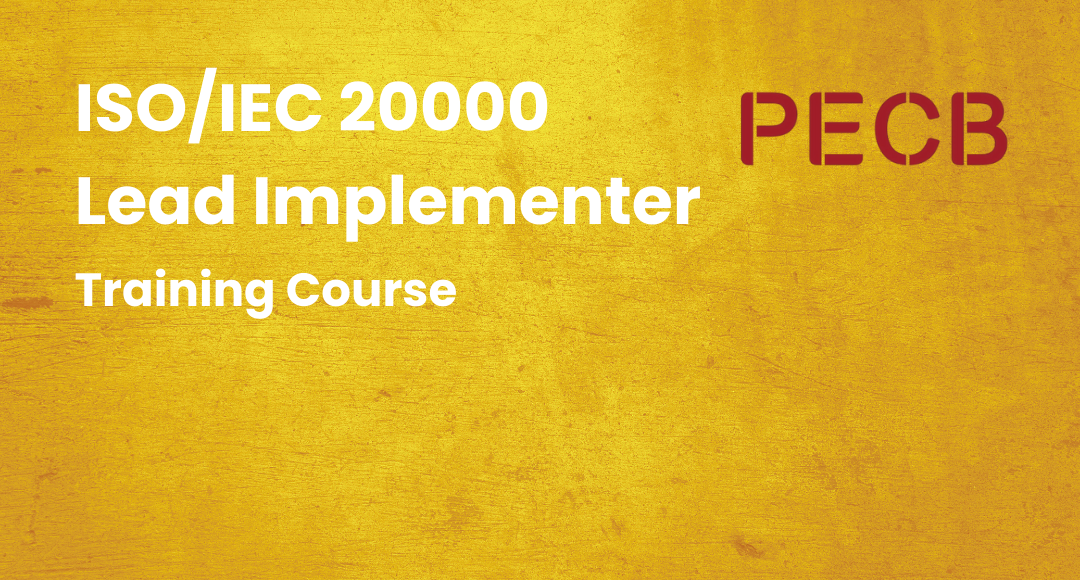ITIL Problem Management Guide for Beginners
-
 By Jagadish Jaganathan
By Jagadish Jaganathan - Published on Dec 15 2023

Table of Contents
- ITIL Problem Management – An Essential Guide
- What is ITIL Problem Management?
- Importance of problem management in ITIL framework
- Why is ITIL Problem Management Important?
- What is a Problem Management Process Flow?
- Incident and Change Management in ITIL Processes
- Roles and Responsibilities in Problem Management
- Key Performance Indicators in Problem Management
- The Value of Problem Management to the Business
- Conclusion
- FAQ
ITIL Problem Management – An Essential Guide
Every business aims to provide quality products and services to its customers. And it’s a time-consuming process to build trust around their business. Service interruptions are the most difficult challenges faced by companies and threaten their credibility.
But no organization, big or small, is immune to factors that might disrupt its service or product. Rectifying these issues and resuming the product and service in a short span is a much-needed quality. Hence, problem management comes into the picture.
Evaluating whether ITIL is a fit for your organization's culture is essential in ensuring that the structured approach it offers aligns seamlessly with your operational practices and business goals.
Problem Management is an important aspect of management principles that aims to prevent unfavorable incidents and, if they do occur, prevent them from occurring again. No customer likes to deal with repeated disruptions or problems from their service providers.
Despite this, many organisations allow repeated instances and fail to tackle the issue at its core. Over time, this damages the company's reputation and might eventually lead to failure.
What is ITIL Problem Management?
ITIL Problem Management is a service management process that aims to manage the lifecycle of the underlying ‘problems’ in IT operations. It is achieved by quickly detecting the problem, providing feasible solutions, and preventing its recurrence to minimise the impact of the problem on business.
Read more about the ITIL Framework.
One of the main functions of Information Technology Infrastructure Library (ITIL) problem management is to identify the errors in the IT infrastructure that are causing the problems and issues users face. Here are some of the terms we need to understand before learning more about ITIL problem management.
→ Problem – it is defined as a cause for one or more unwanted incidents.
→ Error – it is a flaw or malfunction in the design, that causes the failure of one or more IT services.
→ Known error – a problem that has occurred previously, and has data on the root cause and solution.
→ Root cause – the basic or underlying cause of a particular problem.
Problem management has two main ways of functioning based on how we encounter it: proactive and reactive problem management.
→ Reactive Problem Management – manages the problem or issues after the problem has occurred.
→ Proactive Problem Management- This method involves identifying and solving issues before they occur. It is a type of continual service improvement (CSI).
Importance of problem management in ITIL framework
IT Infrastructure Library was established in the year 2000, and is the most common and widely adopted IT service management framework around the world. It is used by individuals and organizations in private and public forums to align IT services with their business needs.
ITIL consists of five core publications relating to Service strategy, design, transition, operation, and continuous service improvement. Problem management is one of them, and it is included in the service operation publication.
ITIL service operation is the most important element of the procedural life cycle. It focuses on the delivery of support services, business value addition, customers, and users. It makes sure that the service level agreements are met and surpassed. Problem management, along with incident and event management, request fulfillment, and access management, makes up the ITIL service operation.
Implementing ITIL service operations along with other ITIL processes is a must to get certified as an ISO/IEC 20000 company. This is an industry-standard guideline for IT infrastructure.
Why is ITIL Problem Management Important?
The problem management process works along with incident and change management to benefit the business in many ways. The main aim of problem management is to reduce the impact of problems on business and avoid their recurrence. And these will in turn result in reduced downtime and disruption. And here are a few other benefits of ITIL problem management,

Implementing the ITIL process will help establish order in the rapidly changing and developing IT landscape. To implement the ITIL process, you need other management processes and tools. The tools here include a common interface, a centralised knowledge centre, and the configuration of other ITIL processes. So that it can help identify the problem and respond to it as quickly as possible.
ITIL does not provide an exact and specified problem management method but rather a structured framework that can be adjusted by organizations based on their needs and requirements. These regular internal adjustments to the framework are very important for the organization's agility or ability to respond to changing needs.
What is a Problem Management Process Flow?
Problem management is not just about identifying an issue and rectifying it. It manages the full lifecycle of the problem. It follows a structured process flow or step-by-step methodology to deal with each instance of a problem.
The process flow of problem management is structured to manage problems as soon as they are reported as incidents by the user. These are the scope of the problem management process flow,

Problem Detection
Problem detection is one of the most crucial parts of problem management. Most of the time, it can be pointed out by the end-user, or the service technicians, but some problems may stay hidden until they break out on a larger scale. Problems can be detected in a variety of ways, like through incident reports, incident analyses, automated detection systems, supplier notifications, and so on.
A lot of incidents might be reported to the service desk, but for them to qualify as problems, the cause must be unknown and the incident must have occurred more than once. Even if the problem is solved by the service technician, if it is repeated, it means the underlying root cause is unidentified and there is an opportunity to improve it. Hence, it is very important to maintain a problem record for every incident reported by the users.
A problem record must be created if there are new problems that have not been reported previously. Even Known problems must be entered to study the intensity of the recurrence.
Problem Logging
Keeping a record of all the performance-related issues with any product or service is of great importance. And to maintain a complete record, all the problems, along with the methods by which they were identified, must be logged in.
Problem logging should contain all the relevant information about the problem, like date/time, user information, a detailed description, the configuration of the item, associated incidents, resolution details, and closure information.
Problem logging mainly involves the categorization and prioritisation of the problem incidents.
Categorization – each entry of the problem needs to be categorised based on its frequency and trend to ascertain the intensity of the incident.
Prioritization – once the problem is categorised, you will get to know its intensity and severity. Based on this, you will have to prioritise it. Prioritising determines when and how the problem will be worked on.
Investigation and Diagnosis
Investigation and diagnosis need to be carried out based on the impact and severity of the problem. The problem investigation mainly aims to establish the root cause of its occurrence. One of the most commonly used investigation techniques is known as the Known Error Database (KEDB).
Through this method, the problem will be studied extensively, and matching patterns with previous problems will be established, which will be used to devise a workaround or solution.
Workaround
Providing a permanent solution to the arising problem is the ultimate goal, but it is a time-consuming process. And you cannot afford a prolonged disruption; hence, you can devise a workaround. A workaround is a temporary fix for a problem.
Most organisations have good bases for providing workaround solutions, but that doesn’t mean you can neglect to provide a permanent solution to the underlying cause of the error.
Create a Known Error Record
It is important to create a Known Error record once the investigation and diagnosis of the problem are complete. With the information from the record, it will be easy to counter future occurrences of similar problems with the help of KEDB.
Resolution
In the Resolution stage of the problem lifecycle, a permanent solution to the problem will be implemented. The solution should be added to the standard operating procedure and tested for system recovery. Once the testing is successful, the changes should be made live.
Closure
Following confirmation that the error has been resolved, the problem incident can be closed. And it is the responsibility of the service desk technician to ensure that all the information related to the problem and its solution is updated in the record.
Incident and Change Management in ITIL Processes
Different ITIL processes often intersect during the service delivery lifecycle. Problem management and incident management are two distinct methods that function by mitigating problems. These processes are performed by the IT department but have different goals.
Problem management aims to prevent and minimise the impact of incidents by finding their root causes. Incident management is to quickly resolve the issue and restore the service to the users in a timely fashion. Incident management only focuses on service restoration and doesn’t dive deeper into the root cause of the problem.
Changes are bound to happen to any process, especially if continuous improvement is being considered. Change management is a process that ensures the change takes place without major disruption. And hence it is closely related to problem management.
Roles and Responsibilities in Problem Management
The organizational structure requires a clear definition of roles and responsibilities for smooth functioning. This will also help in the efficient execution of processes, communication, and teamwork. Usually, the problem management team is made up of a problem manager and a problem-solving team. Let us discuss their roles and responsibilities in detail.
The problem manager is the designated point of contact, whose responsibility is to handle every aspect of the problem lifecycle. Here are some of the key responsibilities of a problem manager:

The problem-solving team can be either internal or external. If the problems are small-scale, they can be handled by the internal development team, whereas some complicated problems need an expert or third-party counsel. You can even put together a special team for problem-solving, depending on the complexity, resources, and severity.
Key Performance Indicators in Problem Management
Success measurement is an important aspect of all management processes. Quantifying the overall success of the process will help you learn more about efficiency. Different organisations follow different methods to measure and quantify success, but Key Performance Indicators (KPI) and Critical Success Factors (CSF) are widely recognised methods to ascertain success.
Different attributes are considered for KPI and CSF depending on the process, needs, requirements, and functions. However, these need to be in alignment with the organization’s goals and objectives. Here are some of the commonly used problem management metrics,
→ Root cause analysis report
→ Problems resolved within the service level agreement
→ Trends associated with the incoming problems
→ Cost of managing a problem
The Value of Problem Management to the Business
Problem Management is a crucial component of IT Service Management (ITSM) that focuses on identifying and resolving the root causes of recurring incidents within an organization's IT infrastructure. While Incident Management deals with the resolution of issues to restore normal service operations, Problem Management goes a step further by addressing the underlying problems to prevent future incidents.
The value of Problem Management to the business is multifaceted and extends beyond just IT. Here are several key aspects highlighting its significance:
- Proactive Issue Resolution: Problem Management takes a proactive approach to identify and resolve issues before they escalate into major incidents. By analyzing patterns and trends, it helps in preventing the recurrence of problems, reducing the impact on business operations, and minimizing potential downtime.
- Enhanced Service Quality and Availability: Addressing root causes through Problem Management improves the overall stability and reliability of IT services. This, in turn, enhances service quality and availability, ensuring that critical business processes run smoothly without interruptions.
- Cost Reduction: The cost of addressing recurring incidents can be substantial. Problem Management aims to reduce these costs by preventing incidents from happening repeatedly. This includes avoiding the need for frequent firefighting, minimizing service disruptions, and optimizing resource utilization.
- Increased Productivity: When IT systems operate efficiently and incidents are minimized, employees can work more productively. Reduced downtime and interruptions lead to improved employee satisfaction and allow organizations to focus on their core business activities.
- Improved Customer Satisfaction: Businesses are highly dependent on IT services to deliver products and services to customers. By preventing disruptions and providing a more reliable IT environment, Problem Management contributes to higher customer satisfaction levels. Satisfied customers are more likely to remain loyal and recommend the business to others.
- Risk Mitigation: Identifying and resolving underlying problems helps mitigate risks associated with IT services. Whether it's security vulnerabilities, data breaches, or system failures, Problem Management plays a vital role in reducing the potential impact on the business and its reputation.
- Continuous Service Improvement: Problem Management is an integral part of the continuous improvement cycle in ITSM. Through the analysis of recurring issues and the implementation of preventive measures, organizations can foster a culture of ongoing improvement, ensuring that their IT services evolve to meet changing business needs.
- Compliance and Governance: In industries with strict regulatory requirements, Problem Management contributes to compliance by addressing issues that could lead to violations. It also supports governance by providing insights into the health and performance of IT systems, helping organizations meet regulatory standards and internal policies.
Conclusion
Problem management is a crucial aspect of business, and with the help of ITIL problem management, you can find and fix the root cause of the issues and problems. Industries are always prone to change and vulnerabilities, so a strong problem management system is a must to survive. And it also helps when changes or improvements cause disruptions to operations.
Effective implementation of the ITIL process is the key to building a strong IT-business relationship. And there are a lot of ITIL management tools to help you with it. There is a growing demand for ITIL specialists, and studies show that on average, ITIL specialists earn more than other information technology professionals.
There are a lot of ways to learn ITIL but the best way to become an ITIL specialist is to take a professional certification training course. Check out these ITIL courses offered by Sprintzeal.
ITIL 4 Managing Professional Transition
ITIL 4 Specialist: Create, Deliver and Support
ITIL 4 Specialist: High Velocity
Sprintzeal is ATO (Accredited Training Organization) providing industry-standards professional certification training.
FAQ
What is Problem Management in ITIL?
ITIL's Problem Management is about identifying and resolving root causes of IT incidents to prevent future disruptions.
What is ITIL 4 Problem Management Practice?
ITIL 4 Problem Management proactively addresses issues, aligning with ITIL 4 principles for enhanced service reliability.
What are the 2 Types of Problem Management?
Reactive deals with incident resolution, while Proactive focuses on preventing incidents by addressing underlying issues.
What is Problem Management Process?
It's a systematic process involving identification, prioritization, and resolution of IT problems, including root cause analysis and knowledge base maintenance.
Subscribe to our Newsletters
Popular Programs
ITIL 4 Strategist – Direct, Plan And Improve
Live Virtual Training
- 4.1 (350 + Ratings)
- 67k + Learners
ITIL 4 Specialist: Create, Deliver and Support
Live Virtual Training
- 4.6 (74 + Ratings)
- 20k + Learners
ITIL 4 Specialist Drive Stakeholder Value Certification
Live Virtual Training
- 5 (82 + Ratings)
- 33k + Learners
Trending Posts
A Guide to Enterprise Asset Management
Last updated on Jan 12 2024
Most Asked Release Manager Interview Questions and Answers 2026
Last updated on Oct 24 2024
ITIL Framework and Certifications Guide 2026
Last updated on Oct 31 2022
Top 6 ITSM best practices
Last updated on Dec 22 2023
Enterprise Architect Interview Questions and Answers 2026
Last updated on Sep 27 2023
ITIL Strategist Certification Overview And Career Path
Last updated on Jan 17 2023
Categories
- Other 69
- Agile Management 45
- Cloud Computing 56
- Project Management 172
- Big Data 66
- Business Management 88
- Digital Marketing 78
- IT Service Management 29
- Programming Language 58
- AI and Machine Learning 76
- IT Security 112
- Quality Management 78
- IT Hardware and Networking 25
- Microsoft Program 4
- Workplace Skill Building 13
- Risk Management 9
- Information Security 8
- Leadership and Management 9
- Corporate Training and Development 1
Trending Now
ITIL Framework and Certifications Guide 2026
ArticleTop 25 ITIL Interview Questions and Answers in 2026
ArticleWhat is ITIL – Information Technology Infrastructure Library jobs and Certification Benefits
ArticleHow to become a certified ITIL Expert in 2026
ArticleIs ITIL a fit for your organization's culture?
ArticleITIL Framework Explained (Updated)
ArticleTOP 10 BENEFITS OF TOGAF CERTIFICATION IN ENTERPRISE ARCHITECTURE
ArticleThe Importance of ITIL certification and scope for career growth
ArticleITIL Certification Levels and Job Scope
ArticleWell Explained : The IT Service Management and ITSM Design, Concepts and its Benefits
ArticleAll about ITIL 4 practices – Updates, Service Types and Benefits
ArticleITIL Strategist Certification Overview And Career Path
ArticleEnterprise Architect Interview Questions and Answers 2026
ArticleMost Asked Release Manager Interview Questions and Answers 2026
ArticleHow to Become a Release Manager
ArticleITIL Processes List – 26 ITIL Processes and 5 ITIL Service Lifecycle Stages
ArticleAxelos and TSO launch MSP Foundation app
ArticleITIL Guiding Principles Explained
ArticleWhat is ServiceNow - A Beginner's Guide
ArticleServiceNow - What is it, Fundamentals And Features
ArticleA Guide to Enterprise Asset Management
ArticleTop 5 IT Service Management Tools in 2026
ArticleService Value System in ITIL 4 Explained in Detail
ArticleThe ITIL 4 Service Desk Guide – Importance and Types
ArticleWhat Is IT Mapping?—An Essential Guide
ArticleTop 6 ITSM best practices
ArticleESM vs ITSM - Key Differences Explained
ArticleTop Incident Manager Interview Questions and Answers 2026
Article















